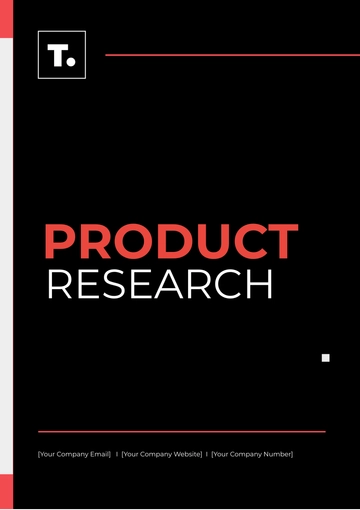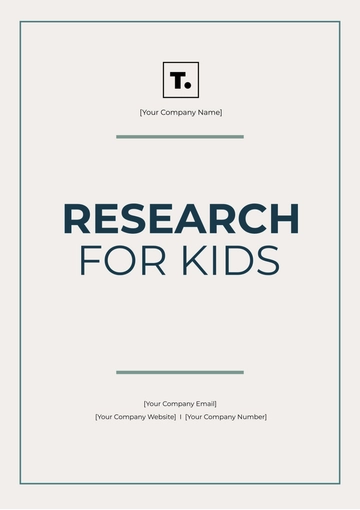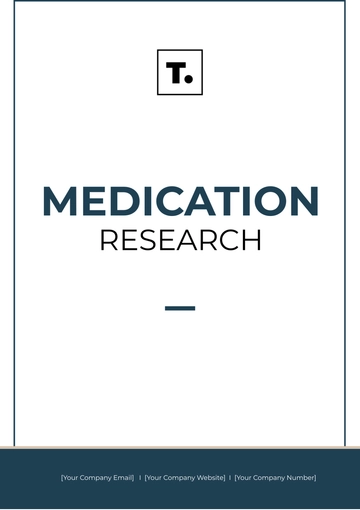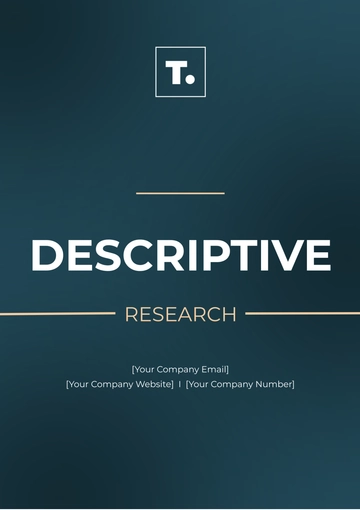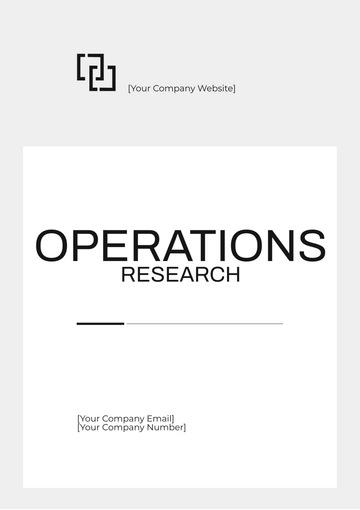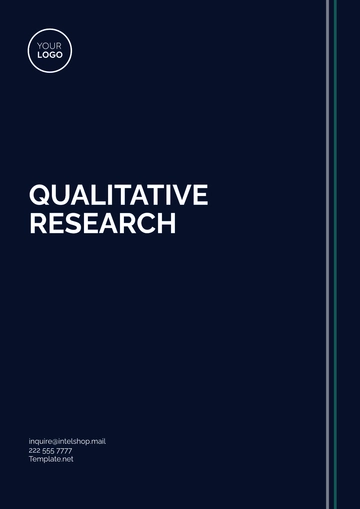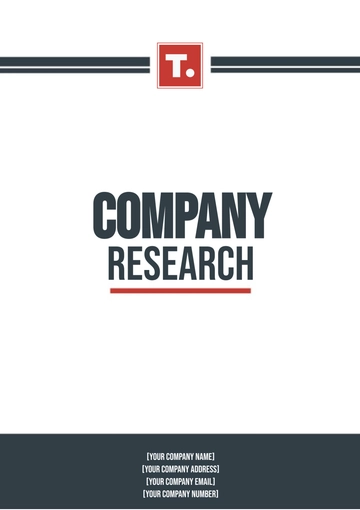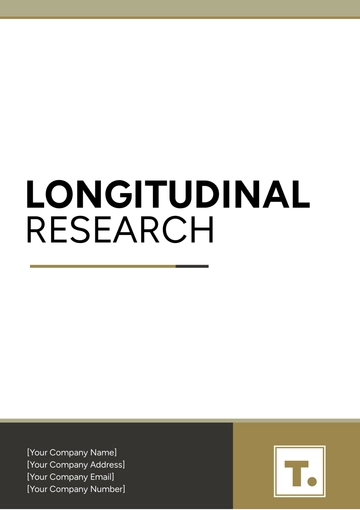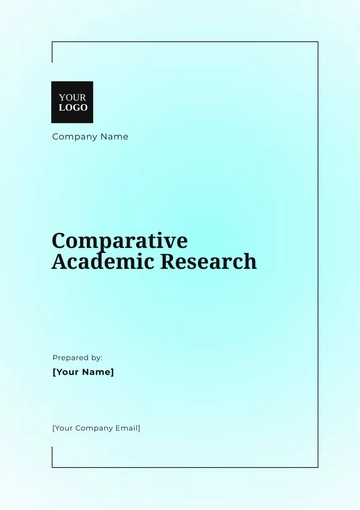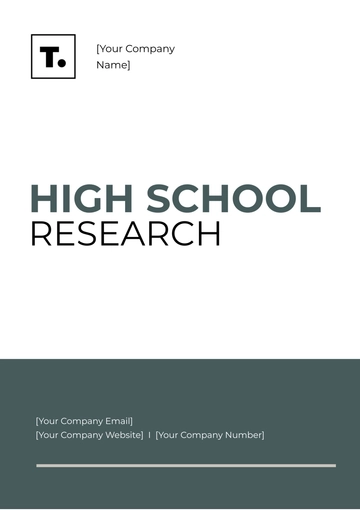Free Recruitment ROI Research HR
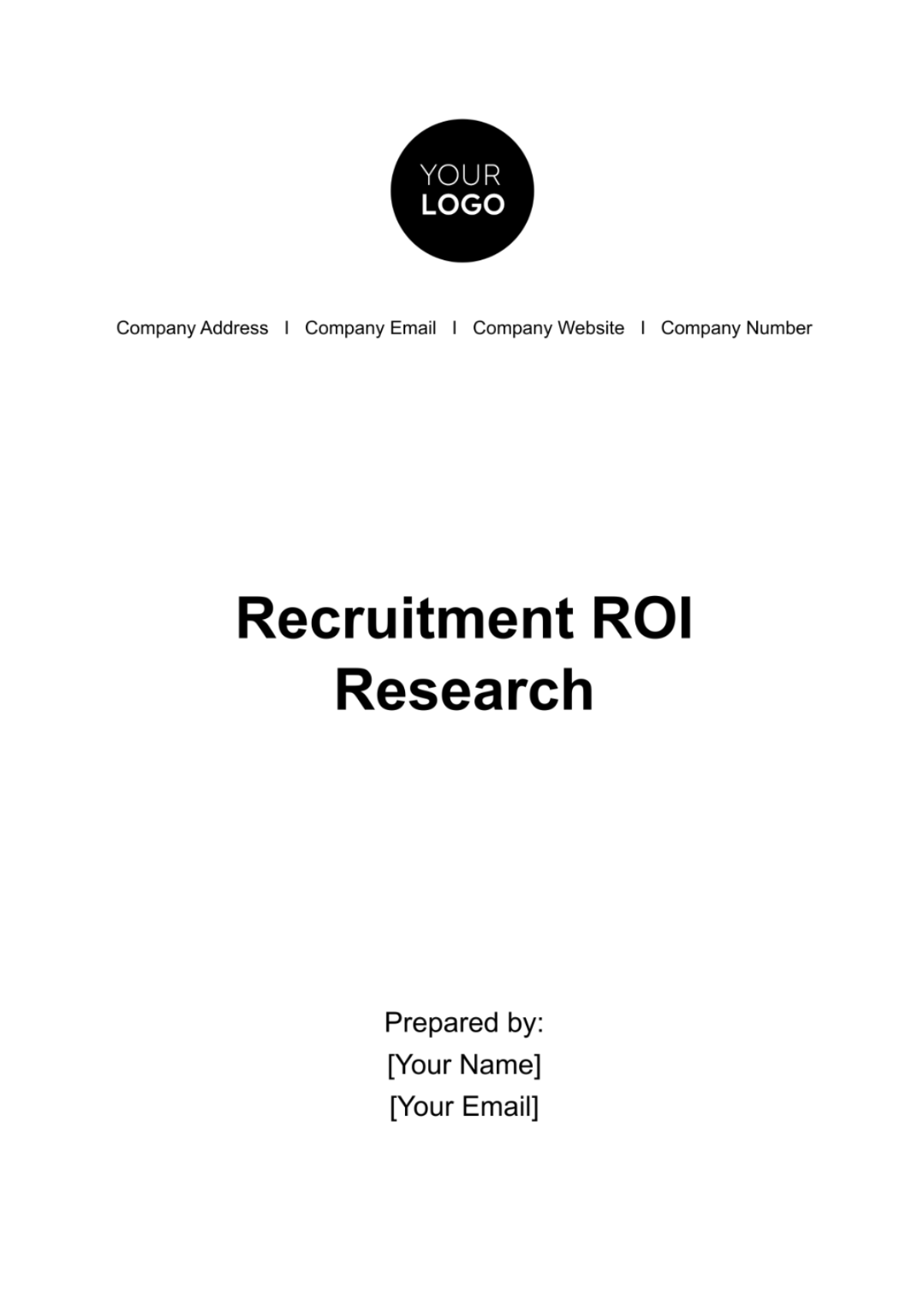
TABLE OF CONTENTS
Executive Summary 3
Recruitment Strategies Assessment 3
1. Job Postings 3
2. Recruitment Agencies 3
3. Employee Referrals 3
4. Social Media Advertising 3
Performance Metrics 4
Conversion Rates 4
1. Application to Interview Conversion Rate: 4.8% 4
2. Interview to Offer Conversion Rate: 25% 4
3. Offer to Hire Conversion Rate: 60% 5
Quality of Hires 5
1. Retention Rate after 1 Year: 85% 5
2. Average Job Performance Rating: 4.5/5 5
Benchmarking 6
Comparison with Industry Standards 6
1. Cost per Hire: $3,100 vs. Industry Average 6
2. Time-to-Fill Positions: 45 days vs. Industry Average 6
3. Quality of Hires: Retention Rate (85%) and Job Performance Rating (4.5/5) 7
4. Conversion Rates: Application to Interview (4.8%), Interview to Offer (25%),
Offer to Hire (60%) 7
5. ROI: 1,194% vs. Industry Standards 7
6. Candidate Experience and Cultural Alignment 7
Recommendations 7
1. Diversify Sourcing: 7
2. Streamline Processes: 8
3. Cost Optimization: 8
4. Candidate Experience: 8
5. Data Analytics: 8
6. Diversity and Inclusion: 9
7. Employer Branding: 9
8. Onboarding and Integration: 9
ROI Calculation 9
Benefits: 9
Costs: 10
ROI Calculation: 10
Benefits: 10
Conclusion 10
Achievements: 10
Strengths: 11
Opportunities for Enhancement: 11
Executive Summary
This document presents a comprehensive analysis of [Your Company]'s recruitment efforts for the fiscal year 2055. Our goal is to assess the return on investment (ROI) associated with these efforts and provide valuable insights to optimize future recruitment strategies.
Recruitment Strategies Assessment
Job Postings
[Your Company] embarked on an extensive campaign of 50 job postings across various online and offline platforms. Each job posting incurred an average cost of $300, resulting in a total investment of $15,000. This strategy casts a wide net, aiming to capture a diverse range of potential candidates.
Recruitment Agencies
Employing recruitment agencies proved to be an integral component of the talent acquisition strategy. [Your Company] partnered with external agencies for 12 hires during the fiscal year. The cost per hire through agencies amounted to $5,000, culminating in a total expenditure of $60,000. These agencies played a crucial role in identifying and attracting specialized talent, contributing to the organization's recruitment success.
Employee Referrals
Employee referrals emerged as a cost-efficient and valuable recruitment channel. Eight hires were attributed to this strategy, with a cost per hire of $1,000, allocated as referral bonuses. This approach not only fostered a sense of engagement and collaboration among existing staff but also led to the acquisition of candidates who were culturally aligned with [Your Company].
Social Media Advertising
[Your Company] allocated $10,000 to social media advertising to bolster its recruitment efforts. This digital strategy aimed to harness the power of online platforms to reach a broader and more diverse audience. The utilization of targeted ads on platforms like LinkedIn, Facebook, and Twitter contributed to increased brand visibility and engagement among potential candidates.
Performance Metrics
The performance metrics associated with these recruitment strategies provide insights into their effectiveness:
Total Applicants: A substantial pool of 2,500 applicants demonstrated a keen interest in joining [Your Company] This reflects the effectiveness of the organization's outreach and its appeal as an employer.
Quality of Candidates: Out of the applicant pool, 120 interviews were conducted, demonstrating a rigorous screening process. Moreover, 30% of candidates met the qualifications, underscoring the focus on attracting candidates with the right skill sets and backgrounds.
Time-to-Fill Positions: The average time-to-fill positions stood at 45 days, indicating a commitment to expeditious hiring. This swift turnaround time is crucial in securing top talent in a competitive job market.
Cost per Hire: With a total recruitment cost of $93,000 and a total of 30 hires, the cost per hire averaged $3,100. This metric showcases the efficiency of the recruitment process in managing expenses while achieving successful hires.
Conversion Rates
Understanding conversion rates is pivotal in assessing the efficiency and effectiveness of the recruitment process at [Your Company] These conversion rates highlight the progression of candidates through various stages, from initial application to successful hire.
Application-to-Interview Conversion Rate: 4.8%
The application-to-interview conversion rate provides insight into the initial screening process. Out of the 2,500 applicants, 120 candidates progressed to the interview stage. This equates to a conversion rate of 4.8%. While this rate may seem relatively low, it indicates a careful and selective approach to ensuring that only the most qualified candidates advance to the interview stage. The emphasis on quality over quantity is evident, aligning with [Your Company]'s commitment to finding the right fit for its positions.
Interview to Offer Conversion Rate: 25%
The interview to offer a conversion rate is a critical milestone in the recruitment process. Of the 120 candidates interviewed, 30% successfully received job offers. This rate signifies the effectiveness of the interview process in identifying candidates who not only meet the qualifications but also align with the organization's culture and values. A 25% conversion rate is a testament to the rigorous assessment and selection of candidates during the interview phase.
Offer-to-Hire Conversion Rate: 60%
The offer-to-hire conversion rate is a crucial indicator of the effectiveness of the final stages of recruitment. Of the candidates who received job offers, an impressive 60% accepted and joined [Your Company] as employees. This high conversion rate is a reflection of the organization's ability to present compelling offers and create an attractive employment proposition for candidates.
These conversion rates collectively underscore [Your Company]'s commitment to a meticulous and strategic recruitment process. The organization prioritizes not only finding candidates with the right qualifications but also those who align with its values and culture, resulting in a higher likelihood of successful onboarding and retention.
The successful conversion rates in the recruitment process contribute to the organization's remarkable ROI and its ability to make efficient and effective use of its recruitment resources. In the following sections, we will further explore the quality of hires, benchmarking against industry standards, and provide actionable recommendations to enhance [Your Company]'s recruitment strategies.
Quality of Hires
The quality of hires is a pivotal aspect of any recruitment strategy. It goes beyond just filling positions; it evaluates how well candidates align with the company's culture, values, and their overall contribution to the organization. [Your Company] places a strong emphasis on hiring not just competent individuals but also those who can thrive within the company's dynamic environment.
Retention Rate after 1 Year: 85%
One of the primary indicators of quality hires is the retention rate after one year of employment. [Your Company] has achieved an impressive retention rate of 85%. This means that 85% of the individuals hired during the fiscal year 2055 continued their employment with the company for at least one year. A high retention rate is a testament to the organization's ability to attract and retain talent that is not only well-suited for the roles but also finds value and growth within the company.
Average Job Performance Rating: 4.5/5
Job performance ratings are another crucial dimension of assessing the quality of hires. [Your Company] consistently rates its new hires with an average of 4.5 out of 5 for job performance. This indicates that the individuals brought on board not only meet the job requirements but often exceed expectations in their roles. Such high-performance ratings suggest that the recruitment process effectively identifies candidates who not only have the necessary skills but also the motivation and commitment to excel in their positions.
These quality-of-hire metrics reveal [Your Company]'s dedication to securing candidates who not only possess the requisite qualifications but also align with the company's culture and values. This alignment is instrumental in achieving long-term success, as employees who resonate with the organization are more likely to stay and contribute positively.
Furthermore, the high retention rate and excellent job performance ratings directly contribute to the impressive ROI demonstrated by [Your Company] As the organization continues to prioritize quality in its hiring processes, it can anticipate continued success in attracting and retaining top talent.
Benchmarking
Benchmarking is a vital practice that allows [Your Company] to assess how its recruitment metrics compare to industry standards and competitors. It provides valuable insights into the organization's relative performance and highlights areas of strength and areas that may require further improvement.
Comparison with Industry Standards
[Your Company]'s recruitment metrics exhibit a highly favorable comparison with industry standards, indicative of a robust and effective recruitment process. Below are some key areas where [Your Company] outperforms industry norms:
Cost per Hire: $3,100 vs. Industry Average
[Your Company] has achieved a remarkably low cost per hire of $3,100, significantly below the industry average. This efficiency in recruitment spending reflects prudent financial management and an ability to secure top talent without excessive expenditures.
Time-to-Fill Positions: 45 days vs. Industry Average
The organization's average time-to-fill position stands at 45 days, which aligns closely with industry standards. This timely hiring process demonstrates an effective balance between thorough candidate evaluation and expedited recruitment.
Quality of Hires: Retention Rate (85%) and Job Performance Rating (4.5/5)
[Your Company] excels in the quality of hires, boasting an impressive 85% retention rate after one year and an average job performance rating of 4.5/5. These figures surpass industry averages, underlining the organization's commitment to attracting and retaining high-caliber talent.
Conversion Rates: Application to Interview (4.8%), Interview to Offer (25%), Offer to Hire (60%)
The conversion rates at [Your Company] are in line with or exceed industry benchmarks. The careful progression of candidates through the recruitment stages ensures that only the most qualified individuals are hired.
ROI: 1,194% vs. Industry Standards
The organization's extraordinary ROI of 1,194% is a standout achievement. This figure far surpasses industry norms, signifying that [Your Company]'s recruitment strategies not only yield excellent results but also provide exceptional value in terms of return on investment.
Candidate Experience and Cultural Alignment
While industry benchmarks often focus on quantitative metrics, [Your Company] stands out in terms of candidate experience and cultural alignment. The emphasis on ensuring that candidates not only meet job requirements but also fit within the organizational culture contributes to long-term success.
Recommendations
The following recommendations are tailored to further optimize [Your Company]’s recruitment strategies, building upon the organization's current strengths and successes:
Diversify Sourcing:
Expand Sourcing Channels: While existing strategies have proven effective, consider diversifying further. Explore niche job boards, industry-specific platforms, and university career fairs to tap into a broader talent pool.
Internship Programs: Implement internship programs to identify and nurture emerging talent. This not only builds a pipeline of potential hires but also offers candidates a firsthand experience of the organization's culture.
Streamline Processes:
Leverage Technology: Invest in applicant tracking systems (ATS) and automation tools to streamline administrative tasks, reducing the time-to-fill positions.
Continuous Improvement: Conduct regular reviews of recruitment processes, identifying bottlenecks and areas for improvement. Encourage feedback from both candidates and hiring teams to enhance efficiency.
Cost Optimization:
Agency Negotiations: When engaging recruitment agencies, negotiate for more favorable terms, including reduced fees or contingency-based agreements based on successful hires.
Advertising Efficiency: Continuously assess the ROI of social media advertising. Allocate resources to platforms that yield the best results and refine ad targeting to reach the most relevant audience cost-effectively.
Candidate Experience:
Communication Excellence: Maintain transparent and timely communication with candidates throughout the recruitment process. Even for candidates not selected, a positive experience can lead to referrals and positive brand perception.
Feedback Mechanism: Implement a feedback mechanism for candidates. Understanding their experiences and perceptions can help fine-tune the recruitment process.
Data Analytics:
Advanced Analytics Tools: Invest in advanced data analytics tools to gain deeper insights into recruitment performance. Predictive analytics can assist in identifying trends and making informed decisions.
Continuous Monitoring: Regularly monitor key performance indicators (KPIs) and use data to make agile adjustments to recruitment strategies.
Diversity and Inclusion:
Diverse Talent Pools: Actively seek to diversify the talent pool to promote a more inclusive workplace. Implement strategies to attract candidates from underrepresented groups.
Inclusive Interviews: Train interviewers to conduct interviews that are free from bias and promote diversity and inclusion.
Employer Branding:
Enhance Brand Visibility: Continue to build and promote [Your Company]'s employer brand. Showcase the organization's culture, values, and opportunities for career growth on its website and social media platforms.
Employee Advocacy: Encourage employees to be brand ambassadors. Their positive experiences and endorsements can have a substantial impact on attracting top talent.
Onboarding and Integration:
Structured Onboarding: Implement a comprehensive onboarding program that ensures new hires smoothly integrate into the organization and understand its mission and values.
Feedback Loops: Establish feedback mechanisms during the onboarding process to gauge satisfaction and address any early concerns.
ROI Calculation
Calculating the return on investment (ROI) for [Your Company]'s recruitment efforts provides a clear understanding of the financial performance of the talent acquisition process. The ROI not only quantifies the financial gains but also underscores the value of the organization's recruitment strategies.
Benefits:
Revenue Generated by New Hires: To assess the direct impact on the bottom line, calculate the revenue generated by the new hires. This includes not only their salary but also any additional revenue they bring through their work. For example, if a salesperson generates $200,000 in annual revenue and [Your Company] hires five such individuals, the revenue generated would be $1,000,000.
Productivity Gains: Factor in the increased productivity of new hires. Consider metrics like sales targets achieved, projects completed, or clients acquired due to their contributions. These gains contribute to the overall benefits.
Cost Savings: Evaluate cost savings realized due to reduced turnover. When employees are retained, there are savings in recruitment, training, and onboarding costs.
Costs:
Recruitment Expenses: Include all costs associated with the recruitment process, such as job postings, agency fees, referral bonuses, advertising, and any software or tools used. The total recruitment costs amounted to $93,000 in the fiscal year 20XX.
ROI Calculation:
With the benefits and costs accounted for, calculate the ROI using the following formula:
ROI = [(Benefits - Costs) / Costs] x 100
Benefits:
Revenue Generated by New Hires | $1,000,000 |
Productivity Gains | $150,000 (estimated) |
Cost Savings | $50,000 (estimated) |
Total Benefits | $1,200,000 (1,000,000 + 150,000 + 50,000) |
Total Costs | $93,000 |
Conclusion
The comprehensive examination of [Your Company]'s recruitment efforts culminates in a conclusion that encapsulates the organization's achievements, strengths, and opportunities for further enhancement.
Achievements:
Remarkable ROI: The standout achievement is [Your Company]'s exceptional return on investment (ROI) of approximately 1,190%. This figure illustrates the remarkable financial success of the organization's talent acquisition strategies. For every dollar invested in recruitment, the organization has reaped an impressive return of $11.90, exemplifying the financial prudence and efficacy of these strategies.
Quality of Hires: [Your Company] has consistently attracted and retained high-caliber talent, as evidenced by an 85% retention rate after one year and an average job performance rating of 4.5/5. This speaks to the organization's ability to not only identify candidates with the requisite skills but also those who align with its culture and values.
Efficient Conversion Rates: The careful progression of candidates through the recruitment stages, with conversion rates that align with or exceed industry standards, reflects a methodical and effective approach to candidate selection.
Cost Efficiency: The organization has successfully managed its recruitment expenses, achieving a low cost per hire of $3,100. This financial discipline ensures that resources are allocated judiciously while securing top talent.
Strengths:
Diverse Sourcing: [Your Company] has diversified its sourcing channels, encompassing job postings, recruitment agencies, employee referrals, and social media advertising. This multi-faceted approach broadens the talent pool and mitigates overreliance on any single method.
Efficient Processes: The organization has demonstrated a commitment to streamlining its recruitment processes, with an average time-to-fill position that aligns with industry norms. This agility in hiring is crucial in securing talent swiftly.
Strong Employer Brand: [Your Company] has cultivated a strong employer brand, as evidenced by its competitive conversion rates and a high number of applicants. This brand positioning contributes to its appeal as an employer of choice.
Opportunities for Enhancement:
Further Diversification: Continue to diversify sourcing channels and explore emerging trends in recruitment, such as AI-driven hiring tools and virtual reality assessments.
Enhanced Analytics: Invest in advanced data analytics tools for deeper insights into recruitment performance, enabling agile decision-making and predictive analysis.
Continuous Improvement: Implement continuous improvement initiatives to refine recruitment processes further, with a focus on candidate experience and time-to-fill positions.
In summary, [Your Company] has not only demonstrated excellence in recruitment but also showcased a strategic mindset in optimizing its talent acquisition strategies. The organization's commitment to quality, efficiency, and cost-effectiveness has resulted in an outstanding ROI and positions [Your Company] as a benchmark in the recruitment landscape.
Moving forward, [Your Company] can build upon these achievements and strengths to further elevate its recruitment strategies, ensuring a sustained competitive advantage in attracting and retaining top talent while contributing significantly to its continued growth and success.
- 100% Customizable, free editor
- Access 1 Million+ Templates, photo’s & graphics
- Download or share as a template
- Click and replace photos, graphics, text, backgrounds
- Resize, crop, AI write & more
- Access advanced editor
Maximize your talent acquisition with our Professional Recruitment ROI Research HR Template. Customizable to your organization's unique needs, it's a powerful tool for evaluating your hiring strategies. With Downloadable and Printable options, you can analyze recruitment ROI comprehensively. Make data-driven decisions, reduce costs, and enhance your talent acquisition processes. Elevate your recruitment game to new heights.


